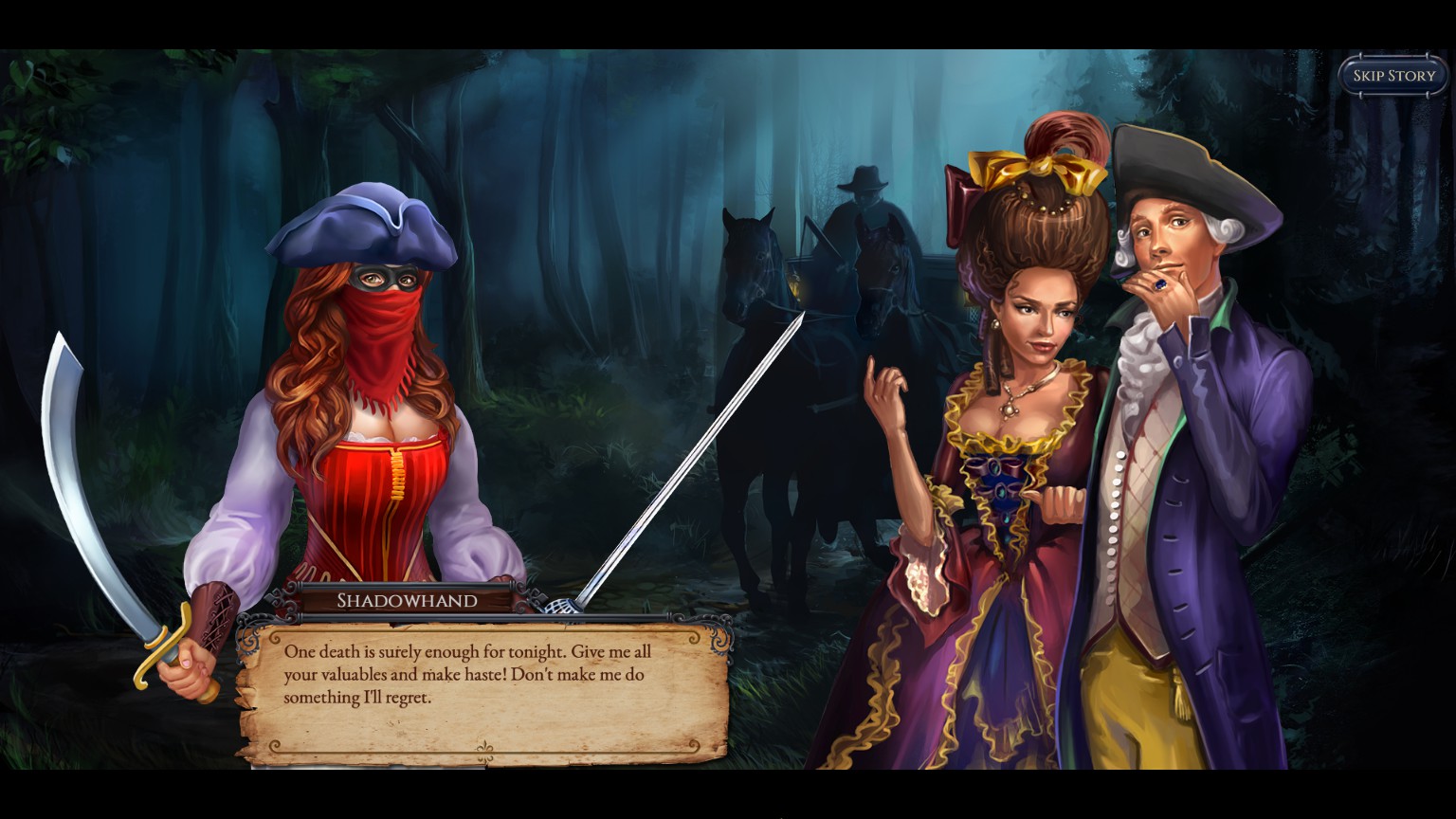
Jake Birkett of Grey Alien Games has been making casual games for over a decade but it was his first collaboration with his wife, science editor and writer Helen Carmichael, that gave Grey Alien a crossover success. They mixed solitaire with the design sense of a historical costume drama to create Regency Solitaire, which met with critical acclaim after being released on Steam. However, this year's follow-up Shadowhand, a solitaire RPG about a highwaywoman that adds card-based combat, had a different sensibility.
I had a chance to speak with the husband-and-wife team about setting a game in rough-and-tumble 1770s England—and releasing it directly to an audience with a different set of expectations.
Questions and answers have been edited for brevity and clarity.
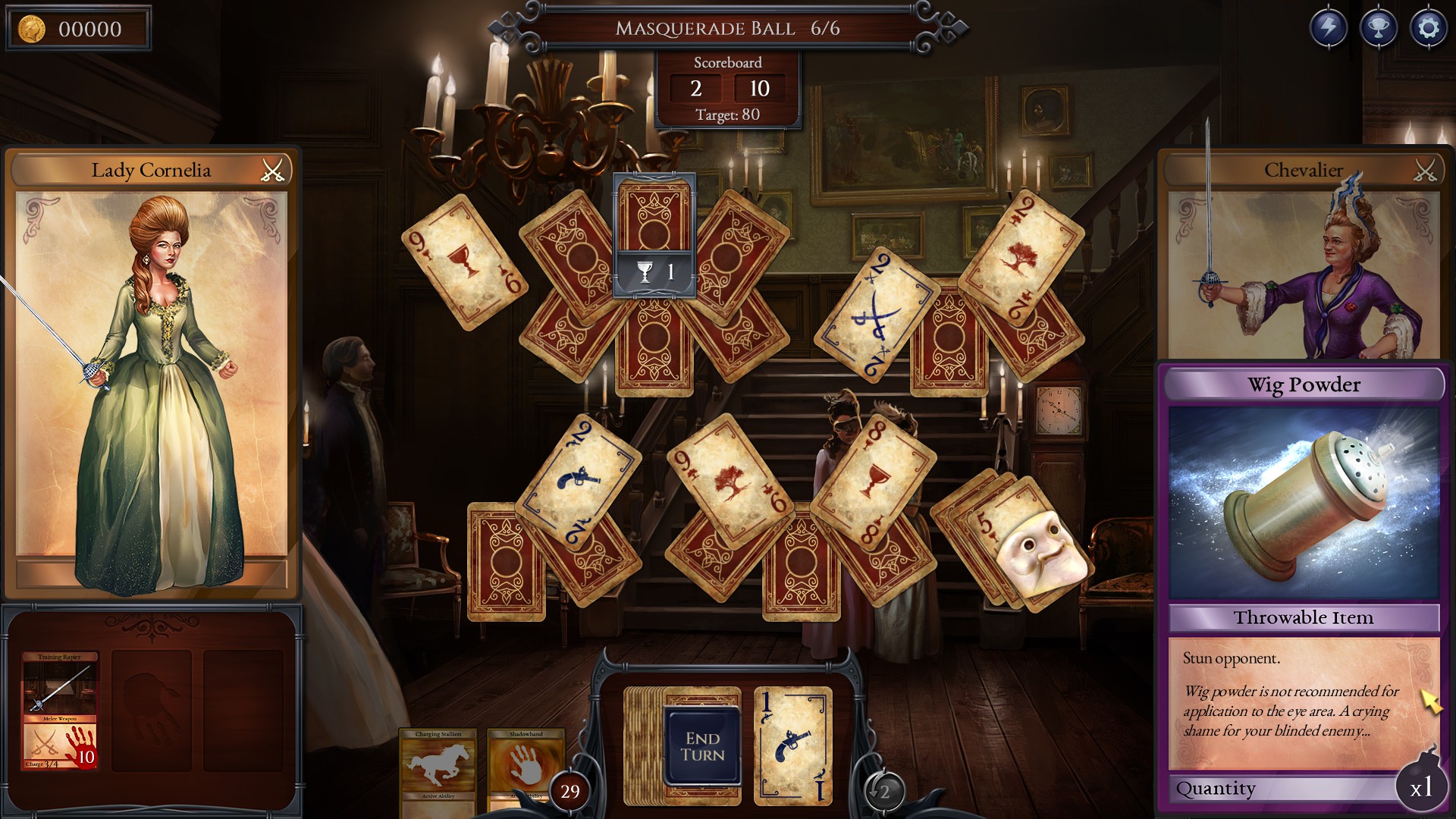
PC Gamer: Shadowhand is a sequel to your previous game, Regency Solitaire, making it the second bodice-ripper solitaire-based game that I'm aware of. It iterates on your previous game, in story, setting, and... solitaire. What was the first idea you had that led to what would become Shadowhand?
Helen Carmichael: In Regency Solitaire there is an older female character, Lady Fleetwood, who hints that she had an interesting youth. It was just a one-liner, but it sowed the seed: to go back in time 40 years from the Regency period, when Regency Solitaire was set. We wanted to make it a bit more edgy than Regency Solitaire, and also to include a much wider range of characters—not just wealthy aristocrats who attended balls.
Yes—the firebomb blunderbuss really did exist!
Helen Carmichael
Sometimes it's good to include the things you enjoy that are right there. We both love British history and we live in the South West of England. Our stretch of coastline was alive with smugglers and wreckers—people who would be on the shore with strong lamps trying to lure ships in, to make them run aground and cause a shipwreck. I got quite immersed learning about highwaymen, smugglers, and how the law worked [in the 1770s]: no police force, just locally-appointed magistrates and various militias.
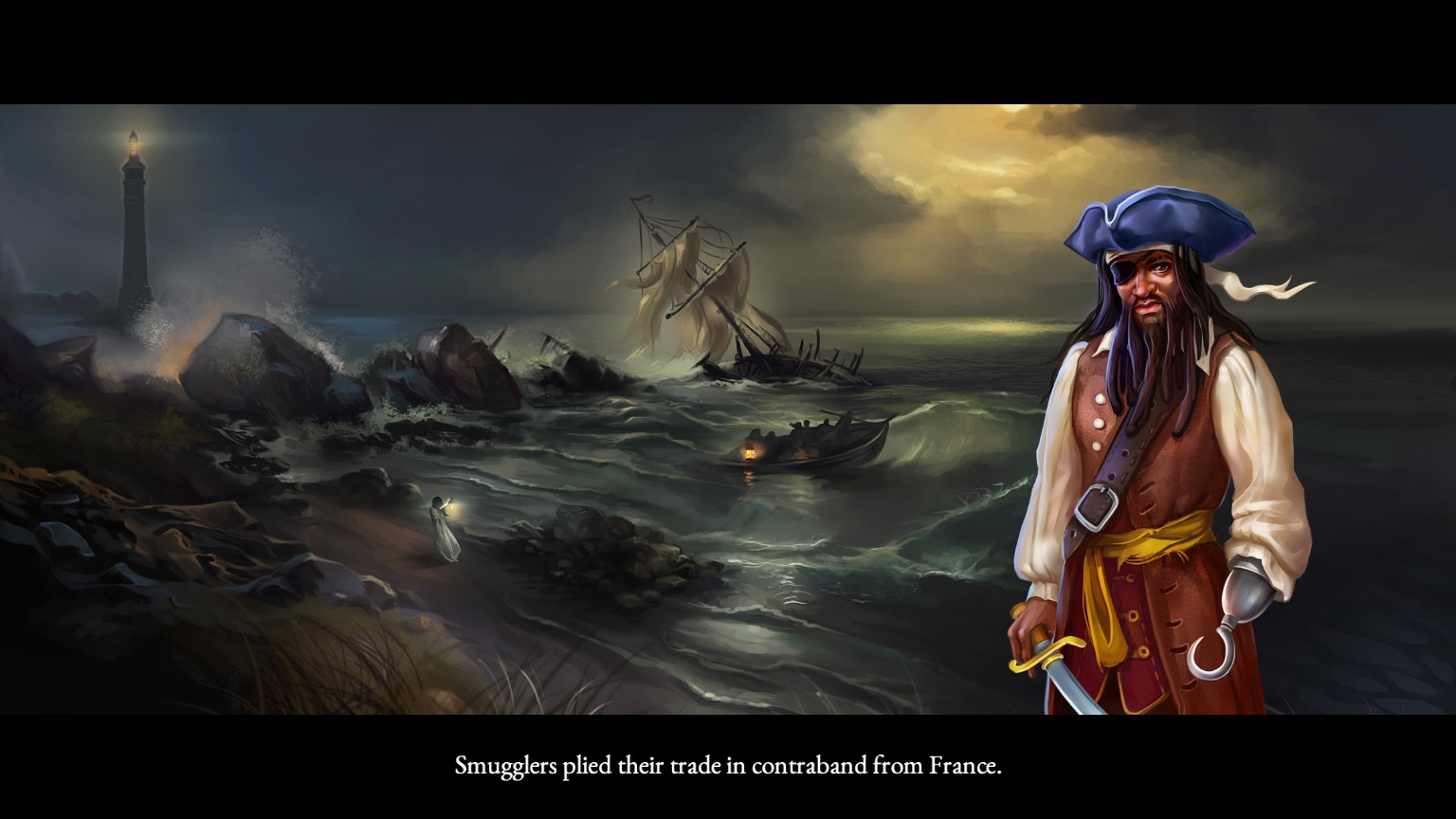
We have put a lot of effort into making the details (clothing, weapons, buildings) historically accurate. Yes—the firebomb blunderbuss really did exist! This approach worked well for us in creating a game setting for Regency Solitaire, and we feel it also worked for Shadowhand.
Keep up to date with the most important stories and the best deals, as picked by the PC Gamer team.
There is an ancient sword in the game forged in Avalon by a trainee blacksmith called Conan. While we were making the game our teen son Conan did actually go to a forge in Avalon (Glastonbury) and forge his first sword. It seemed only fair to include it.
Regency Solitaire was first available on casual game portals like Big Fish Games, and only later launched on Steam. In contrast, Shadowhand went straight to traditional game stores, like Steam, Humble, and GOG. How did that happen?
Jake Birkett: Cliff [Harris, of Shadowhand publisher Positech Games] liked Regency Solitaire, and at the time he was publishing indie games. He actually asked me to pitch a sequel that would be suitable for Steam. Normally indies have to seek out and pitch to multiple publishers.
Helen already had this highwaywoman idea, but the concept needed something else to appeal to a non-casual audience. That's when I had the brainwave to add in turn-based combat. The idea sprung pretty much fully-formed into my head and when I coded it and tried it out, it worked very well! There were tweaks and refinements of course, but it's pretty close to my original "vision".
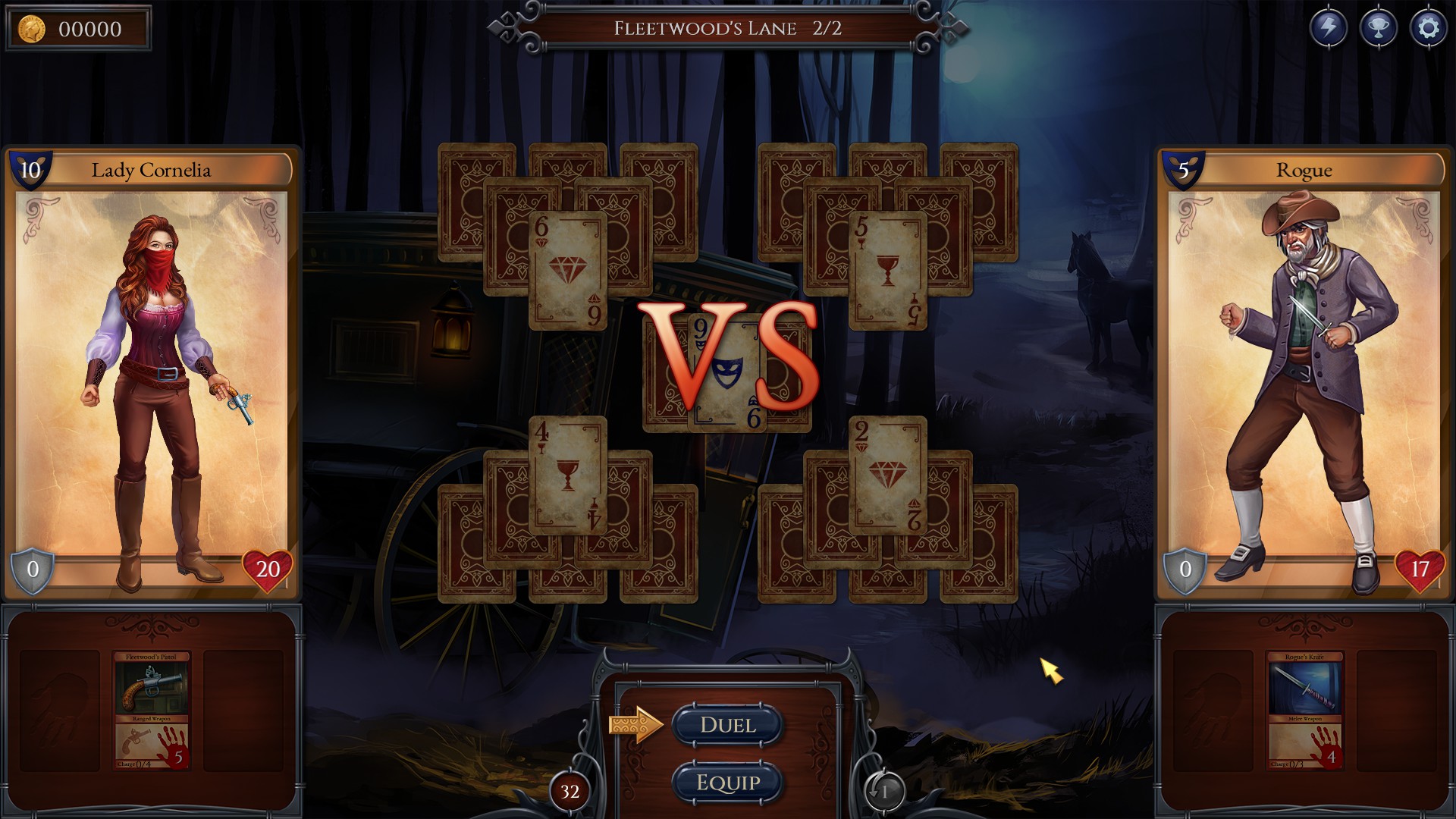
HC: We already had an automated AI testing system that we had created to check the difficulty of the levels on Regency Solitaire. We already had the theme and ideas about highway robbery and making some kind of more strategic and in-depth game. Our core mechanic was solitaire, so we thought, can we drive turn-based combat using solitaire?
Regency Solitaire uses large buttons and has a fairly deliberate feminine-styled UI. We based [it] on women's jewelery from the Regency period.
Helen Carmichael
Then followed months of iteration as we gradually worked out how the various different systems in the game would affect the cards—the player actually has a big advantage over the AI of being human (automatically makes smarter and more strategic moves) and also of all the various gear, training and attributes they acquire through the game that end up giving quite a major advantage over the AI enemies.
JB: Games like Bookworm Adventures and Puzzle Quest were an influence. I had also played the Early Access version of Darkest Dungeon not long before, and I really liked the way the characters came together when one hit the other. So I attempted to kind of emulate that with the characters on cards in Shadowhand. It's only a really simple two frame animation but it works, especially with the addition of great sound effects from [Vancouver-based subcontractor] Powerup Audio.
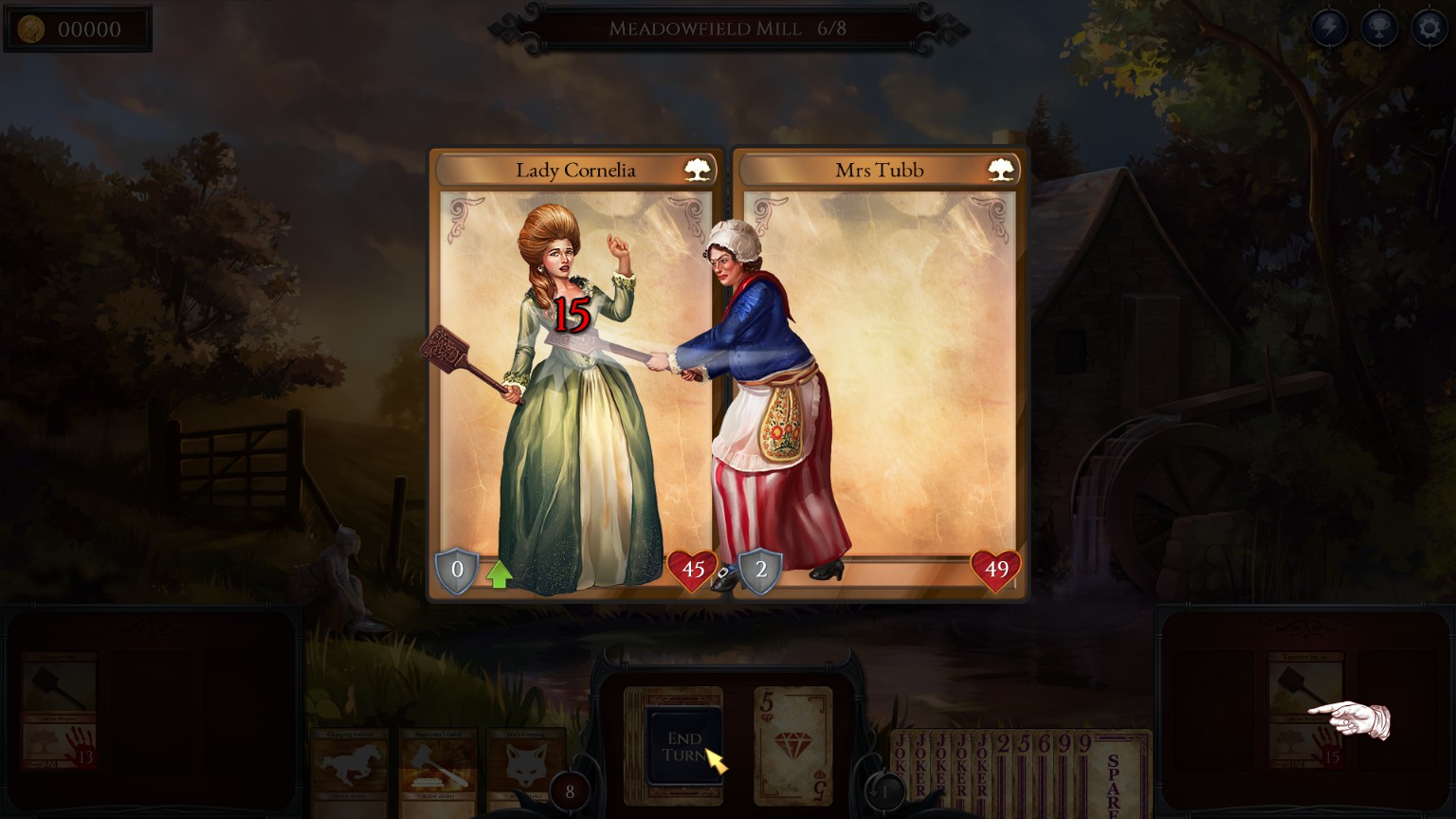
HC: Shadowhand was targeting a core gaming audience on Steam, whereas Regency Solitaire was aimed primarily at the casual market. So we have both put a lot of thought into our audience and that has influenced the design of both games considerably.
How did the different audience affect Shadowhand?
HC: Solitaire is quite a tough and strategic game, as many card players recognize. We already had something there we felt we could work with. The issue was how to message it to appeal both to card players and also perhaps to those in the core audience who may not have played this type of game before.
Some of the decisions were about how we message things visually: Regency Solitaire uses large buttons and has a fairly deliberate feminine-styled UI. We based [it] on women's jewelery from the Regency period. The pink and gold color scheme was fashionable for both men and women, and was also common in interior decor then. We love it but we also couldn't see that resonating with the core audience.
JB: The first iteration of the UI the artists sent us for Shadowhand was too casual (too big, too purple), so we sent them more references and eventually ended up with a look we are very happy with.

HC: [For Shadowhand], we have a lot more information on display and didn't hold back from "complexity". There are many layers of strategy in Shadowhand and you do have to deploy them to win. We have tried to message this to the players, and added a number of systems—mainly to do with inventory management and character stats, so that they can manage their loadout.
We still introduce the various layers and systems gradually over the first few hands. The difficulty is in showing a new player just how much there is going on and how many choices they can make, but not overwhelming them with all of that immediately. It's a fine balancing act.
At its heart, Shadowhand is a solitaire-style game, and thus involves plenty of RNG and tries.
Jake Birkett
JB: I think some people still probably look at the theme and art style of Shadowhand and think it looks too casual and maybe skip it. Though those who give it a chance soon discover the gameplay is anything but casual: it's quite hard in normal mode. There's a lot of depth that emerges after the first few chapters.
Regency had no "traditional" RPG elements. Just a ballroom you upgraded which affected the gameplay in some ways. However, Shadowhand has the inventory (weapons, outfit, consumables, special abilities), and character states plus of course the whole turn-based combat system, so that's why we call it an RPG.
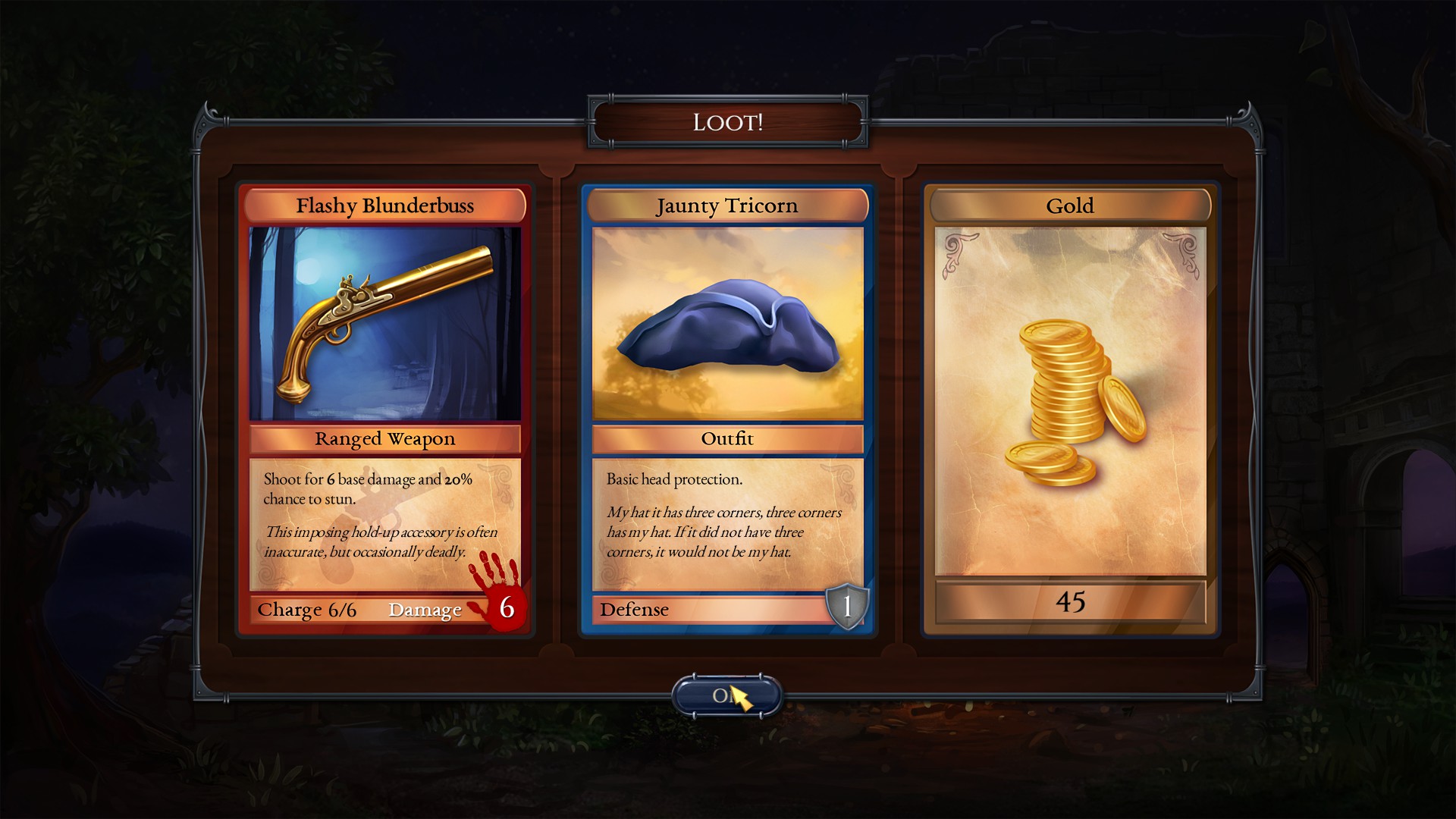
What you describe as the core audience are often conditioned to expect an inexorable upward power curve and a "fairness" where there's always a right answer to avoid failure. Casual games, on the other hand, are often harder and less "fair" in that way—there may be no right play to clear the entire table in solitaire with a given draw. Failure isn't as punishing in a casual game, though, because win or lose, you're simply going to play again with a new shuffle.
How did you tackle the challenge of satisfying the need to feel like there was a right way to win, when solitaire often doesn't have a right, winning answer?
HC: Casual gamers are often dismissed somewhat, and this fails to recognize the skill that is required to beat many casual games.
JB: Agreed. Regency Solitaire on hard mode was hard. The chapter goals were intense and required a lot of skill at playing the cards and using the abilities, and of course retries! At its heart, Shadowhand is a solitaire-style game, and thus involves plenty of RNG and tries.
We gave the players lots of tools to influence the outcome. You can still lose due to bad luck or win easily with good luck, but in a close match—and there are lots of those due to the balancing we did—players can swing it their way by using skill and abilities, and those are the most exciting and rewarding situations.
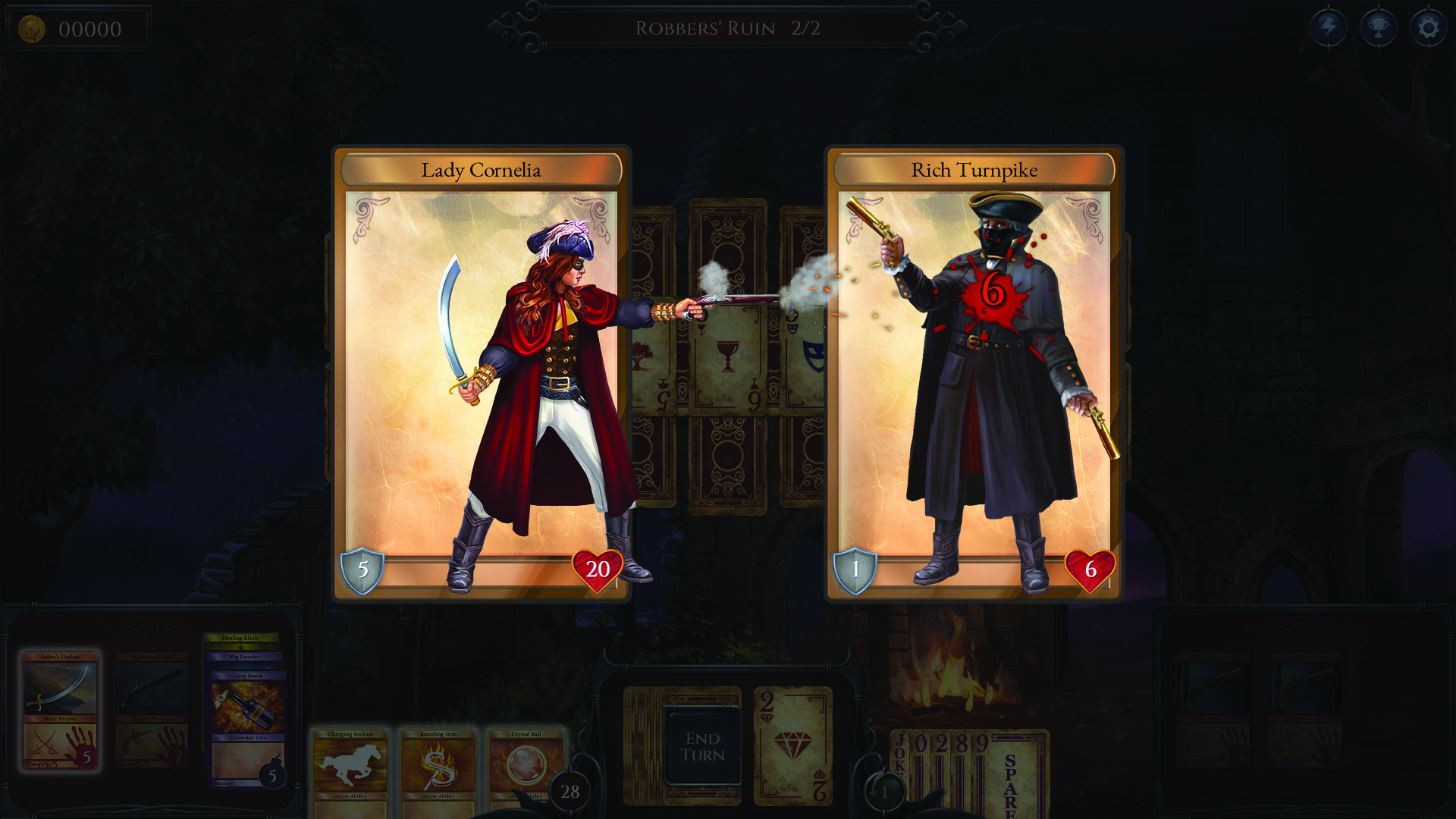
[Some players] want to always win, as you have identified. There seems to be a contingent of players who want to play something on hard mode and get the accolade of beating it but not without the pain of losing and having to retry. We decided to rename "hard" to "very hard" in the hope that people will take it more seriously.
Plenty of other people love it though. We have to accept that it's not a game for everyone, but for those that do accept the nature of the game, it's great fun. Something like Darkest Dungeon is brutal and pure [randomness], and they got flak from people. But, ultimately it sold tons, so we knew we'd still be OK.
I think it's possible you would see both core and casual games from us in the future. Being at the crossover is an interesting place to be.
Helen Carmichael
HC: In card games, the cards are dealt. It's a game of chance, to some degree. We give the player many opportunities to be "luckier" through their choices—but we also don't want to patronize them.
JB: I can understand why people don't like losing due to bad luck. But if you accept that losing and retrying is part of the core premise of Shadowhand, then you can focus on choosing the right equipment for the job and playing the hand to the best of your abilities. That's how we empower players, in the choices they can make on the micro level (with the card play) and the macro level (with their loadouts and stat upgrades).
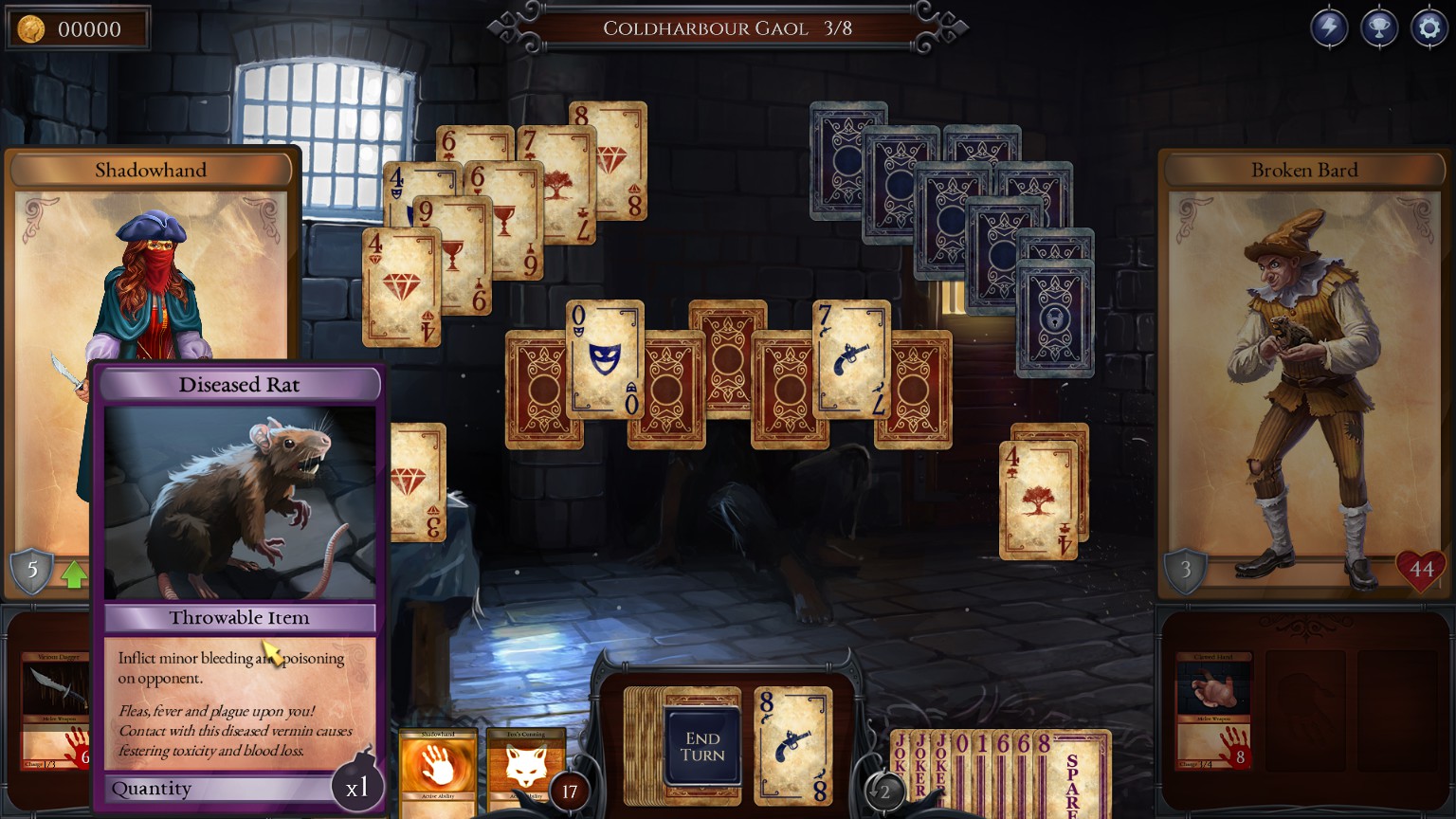
Solitaire players expect a random shuffle and to lose sometime, but that can come as a shock to players new to the genre. There may be merit in making a different game with a fixed layout that applies all kinds of background tricks to give the player a different experience for sure, but it's too late to apply that to Shadowhand.
Jake mentioned in a GDC 2016 talk that only 14% of your revenue on Regency Solitaire at the time was from Steam; the rest was from casual game portals. Now Shadowhand is only on Steam and its competitors. Are you done with the casual game market?
HC: Not necessarily. We need a few weeks for the dust to settle after launching Shadowhand to decide our next move.
JB: We were discussing what game to make next last night. And we have some casual game ideas, and some game ideas more like Shadowhand.
HC: The good news for us is that we have quite a few options. I think it's possible you would see both core and casual games from us in the future. Being at the crossover is an interesting place to be. There are definitely design values from casual that can inform a core game.

